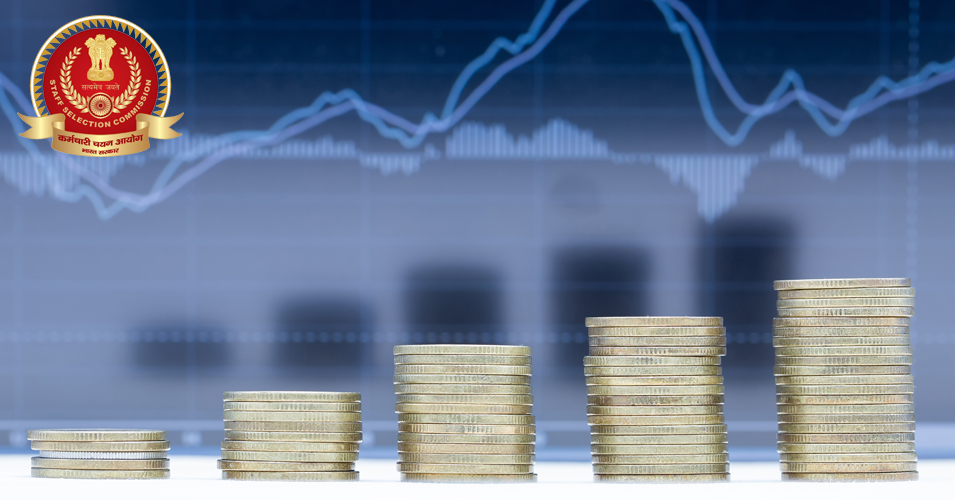Indian Economy General Knowledge Questions and Answers for SSC and Bank Exams

Some Indian Economy GK questions are asked inside the GK section in SSC and Bank exams are usually conducted in India, with good practice candidates can solve Economy GK questions in less time in the SSC exam.
Indian Economy-General Knowledge
So, with the help of this blog, all candidates can get Indian Economy General Knowledge Questions and Answers for SSC and Bank Exams. Also, candidates can increase their speed, accuracy and confidence by solving all these GK quizzes daily. Apart from this, you can also check your own preparation for Indian Economy General Knowledge questions.
Also, Read Latest Current Affairs Questions 2023: Current Affairs Today
Test your knowledge and stay ahead with our General Knowledge Mock Test and Current Affairs Mock Test– a perfect way to challenge yourself and stay updated!
Economy General Knowledge Questions
Q : What is the per capita net national income of India during FY 2017-18?
(A) Rs. 1,11,782 per year
(B) Rs. 73,285 per year
(C) Rs. 82,269 per year
(D) Rs. 99,215 per year
Correct Answer : A
Explanation :
Explanation: Per capita net national income in India is estimated at Rs 1,11,782 (at current prices) during the financial year 2017-18, which shows an increase of 8.3% over the previous year. The per capita income during the financial year 2016-17 was Rs 1,03,219.
Which of the following items is the major reason for WPI-based high inflation in India?
(A) Primary goods
(B) Fuel and electricity
(C) Manufacturing products
(D) None of the above
Correct Answer : C
Explanation :
Explanation: In India, three groups of commodities have major contribution in the calculation of inflation. In this, primary products contribute 20.1%, fuel and electricity (14.9%) and manufacturing products contribute 65%. Therefore, the biggest reason for high inflation in India is manufacturing products.
At present, what is the contribution of the agriculture sector to the income of the Indian economy?
(A) 53%
(B) 25%
(C) 17%
(D) 33%
Correct Answer : C
Explanation :
Explanation: The share of agriculture sector in the income of Indian economy is about 17.1% in the financial year 2017-18. The service sector remains the foundation of the Indian economy and contributes about 59% to India's income.
Which is the largest item exported from India from April 2017 to November 2017?
(A) Gems and jewelery
(B) Petroleum crude products
(C) Clothing and allied products
(D) Engineering goods
Correct Answer : D
Explanation :
Explanation: The largest export item exported from India during April 2017 to November 2017 is engineering goods which accounts for 26% of India's total exports. Chemical and related products rank second and contribute about 14.5% of total Indian exports.
According to the new definition of Micro, Small and Medium Enterprises, an enterprise in the manufacturing sector will be called a small enterprise, if its…..
(A) Annual turnover is less than Rs 5 crore
(B) Annual turnover is between Rs 75 crore and Rs 250 crore
(C) Annual turnover is between Rs 5 crore and Rs 75 crore
(D) Annual turnover is between Rs 10 crore and Rs 50 crore
Correct Answer : C
Explanation :
Explanation: As per the new definition of micro, small and medium enterprises; The definition of micro, small and medium enterprises in the manufacturing sector is as follows;
Which of the following is not qualitative control of credit by the central bank of a country?
(A) Rationing of credit
(B) Regulation of consumer credit
(C) Variation in margin requirements
(D) Regulation of margin requirements
Correct Answer : C
Explanation :
Methods of credit control There are two methods that the Reserve Bank of India uses to control the money supply in the economy. ,
• Publicity ...
• quantitative method ...
If marginal returns increase at a decreasing rate, then total returns:
(A) Increases
(B) Decreases
(C) Remains Constant
(D) Income becomes
Correct Answer : B
Explanation :
This question talks about increasing marginal returns at a decreasing rate, which is actually a diminishing marginal return. In economics, the law of diminishing returns states: "If increasing amounts of a variable factor are applied to a fixed amount of other factors per unit of time, the increase in total output will increase at first but beyond a point it will According to Richard A. Bilas's law of diminishing returns, if investment of one resource is kept constant, the resulting increase in output will become smaller and smaller beyond a point. “So as marginal returns increase at a decreasing rate, total returns will eventually decrease.
RRB is owned by:
(A) Central Government
(B) State Government
(C) Sponsor Bank
(D) Jointly by all of the above
Correct Answer : D
Explanation :
According to the Act, RRBs are owned by the Central Government (50%), State Government (15%), and sponsor banks (35%). RBI has no ownership of RRBs.
Which scheme of the Government of India makes Indian cities free from slums?
(A) Indira Awas Yojana
(B) Central Rural Sanitation Program MME
(C) Rajiv Awas Yojana
(D) Antyodaya
Correct Answer : C
Explanation :
Rajiv Awas Yojana (RAY) has been launched to create a Slum Free India whose main objective is to ensure availability of proper shelter with basic infrastructure and social facilities to every citizen.
Excessive use of resources is called the ‘tragedy of the commons’. It was propounded by:
(A) Garrett Hardin
(B) Seligman
(C) Adolf Wagner
(D) A.P. Lemier
Correct Answer : A
Explanation :
In 1968, biologist Garrett Hardin proposed a theory called The Tragedy of the Commons, in which he argued that finite resources such as forests, fisheries, clean air, and clean water that are commonly used will inevitably be wasted unless will go as long as their use is unregulated. ,



